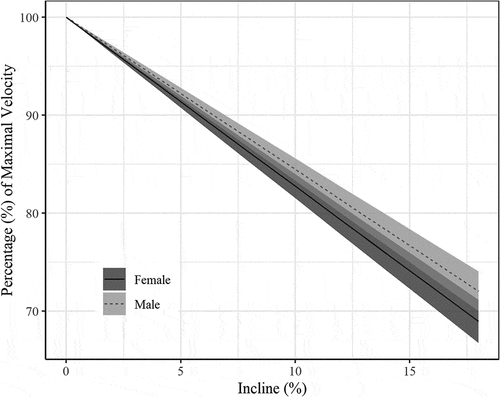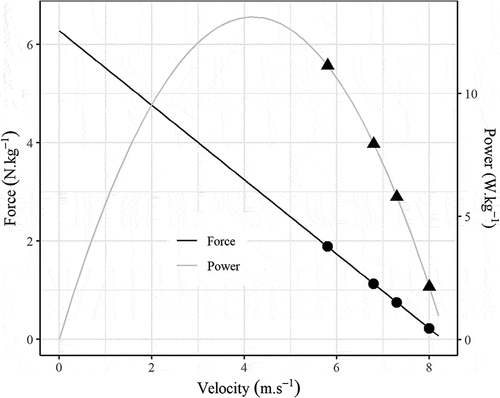Figures & data
Table 1. Definition and practical interpretation of the main variables of interest when using force–velocity–power profiling in sprinting (adapted with permission, (Samozino et al., Citation2016))
Table 2. Descriptive statistics (mean ± SD) for individual force–velocity–power (FVP) and load–velocity (LV) profiles for collegiate level athletes
Figure 1. Load–velocity profile during hill sprinting of collegiate-level athletes. Trendline represents the average profile (± SD) for males (n = 10) and females (n = 14), respectively.

Figure 2. Example of one athlete’s force–velocity–power profile measured during sprint on flat terrain (trendlines representing force–velocity and power–velocity relationships, respectively). Points on each line represent the velocity achieved during the flat sprint and each of the three different hill conditions, demonstrating that the gradients assessed during this study represented the velocity end of the force–velocity relationship.

Table 3. Reliability statistics (± 90% confidence intervals) for individual load–velocity measures during hill sprinting for collegiate level athletes
Table 4. Relationship between LV variables measured during hill sprinting and mechanical properties of sprinting on flat terrain. Data are presented as mean; 90% confidence intervals
